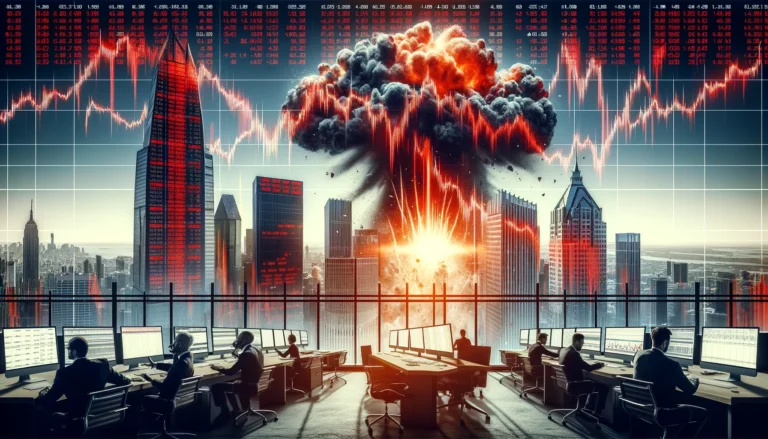The U.S. stock market faced a massive downturn on February 21, 2025, as major indices suffered one of the worst single-day losses in recent history. Investors saw approximately $1.47 trillion in market capitalization wiped out, driven by economic concerns, policy uncertainty, and declining consumer sentiment. This sharp sell-off has raised fresh questions about market stability and the broader economic outlook.
Market Performance and Indices Collapse
The dramatic decline affected all major stock indices:
- Dow Jones Industrial Average: Declined 748.63 points (-1.69%) to close at 43,428.02.
- S&P 500: Dropped 104.39 points (-1.71%) to 6,013.13.
- Nasdaq Composite: Fell 438.36 points (-2.2%) to 19,524.01.
The widespread losses resulted in the largest market capitalization decline of the year, with investors scrambling to assess potential risks amid growing uncertainty.
Primary Factors Behind the Market Plunge
Several economic and policy-related developments triggered this sharp downturn:
- Weakening Consumer Sentiment: The University of Michigan’s consumer sentiment index fell 10% to 64.7, indicating growing pessimism about economic conditions and future spending trends.
- Trade and Tariff Concerns: President Donald Trump’s latest tariff threats on pharmaceuticals, semiconductor chips, and wood products have heightened fears of a prolonged trade conflict, adding pressure on investor confidence.
- Sector-Specific Sell-Offs: The healthcare industry took a significant hit, with UnitedHealth Group shares dropping 7.3% due to a Department of Justice investigation into its Medicare Advantage billing practices.
Historical Context and Comparisons
While the losses are severe, they do not surpass some of the worst market crashes in history:
- Black Monday (1987): The Dow fell 22.6% in a single day, marking the biggest one-day percentage decline.
- COVID-19 Market Crash (March 16, 2020): The Dow plunged by 2,997 points, triggering global financial turmoil.
- 2022 Inflation-Driven Decline: High inflation and Federal Reserve rate hikes led to the S&P 500 shedding nearly $2 trillion in market value during a single session.
Despite the severity of the latest decline, experts suggest that while alarming, this event does not yet reach the catastrophic levels of past financial collapses.
Investor Strategies in Volatile Markets
Market analysts are advising investors to adopt a cautious and strategic approach:
- Diversification: Spreading investments across different asset classes to minimize risk.
- Safe-Haven Assets: Investing in gold, treasury bonds, and stable assets to hedge against volatility.
- Monitoring Policy Changes: Keeping an eye on Federal Reserve announcements, inflation data, and employment reports to adjust investment strategies accordingly.
Economic Outlook and Market Projections
Despite the current sell-off, financial experts believe that the U.S. stock market remains fundamentally strong. However, the coming weeks will be crucial as investors await new economic indicators, including inflation data and employment reports, to gauge the market’s direction.
The Federal Reserve’s next policy moves, corporate earnings reports, and geopolitical developments will all play a critical role in shaping market sentiment. While short-term volatility is expected to persist, long-term investors are being advised to remain patient and focus on broader market trends rather than day-to-day fluctuations.
As uncertainty continues to grip the markets, staying informed and adapting to shifting economic conditions will be key to navigating the road ahead.


